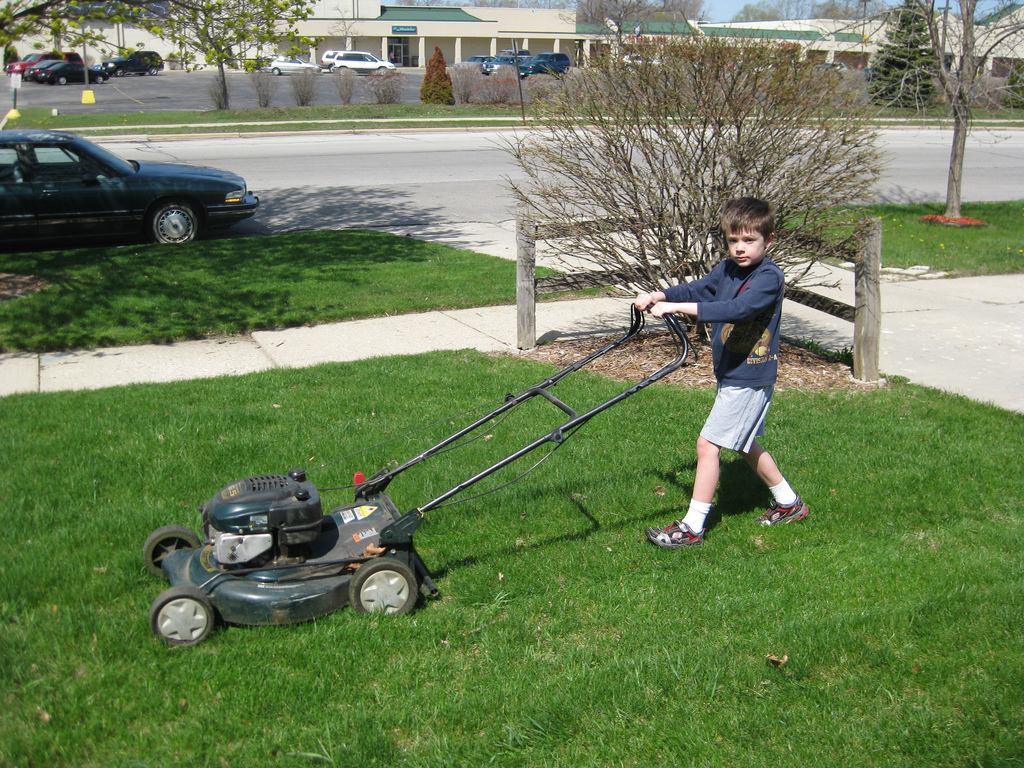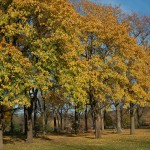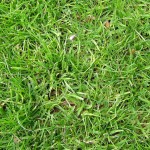
Lawn mowing may not be rocket science, but there is a science to a great mow. Check our quick guide below for lawn care tips that will have you mowing like a pro in Minneapolis!
Mowing like a pro
Photo: Flickr / heipei
Only cool-season grasses are able to live and prosper in Minneapolis, so if you need help choosing a grass then check our Minneapolis cool-season grass types guide. Cool-season grasses can be sensitive to the hot summer heat so there are some precautions to take for a lush, green lawn during the summer.
Mowing height and frequency directly affect the health and performance of a lawn; proper lawn care practices are key for keeping grass uniform, attractive, and just overall healthy and green. The shorter the grass the more often it will need attention. However, during the summer it might be a good idea to cut the grass a tad bit longer.
Mowing grass too short during the summer is the primary suspect for many deteriorated lawns in Minneapolis.
When too much of the grass blade is cut off at a time the grass doesn’t have enough leaf surface left to produce necessary foods for sustenance and growth. This is the cause for the golden lawn mowing rule; never remove more than ⅓ of the grass blade at a time. If you miss a mowing for whatever reason, only cut away half the amount that you’d like to and ease the grass back into your desired height.
Recommended mowing heights
Tall fescue – 3 to 4 inches in the summer compared to 2 to 3.5 inches in the spring and fall
Kentucky bluegrass – 2 to 3.5 inches in the summer compared to 1.5 to 2.5 inches in the spring and fall
Perennial ryegrass – 2.5 to 3.5 inches in the summer compared to 1.5 to 2.5 inches in the spring and fall
Creeping red fescue – 2 to 3 inches in the summer compared to 1 to 2 inches in the spring and fall
Chewings fescue – 2 to 3 inches in the summer compared to 1 to 2 inches in the spring and fall
Hard fescue – 2 to 3 inches in the summer compared to 1.5 to 2.5 inches in the spring and fall
Sheep fescue – 2 to 3 inches in the summer compared to 1.5 to 2.5 inches in the spring and fall
Some benefits to giving your cool-season grass a taller:
- It shades the soil, creating a natural weed repellent; we always say the best weed defense is a healthy lawn
- Cool-season grasses prefer the cooler soil temperatures created by shaded soil
- A taller cut fosters a deeper root system, allowing the roots to absorb water and nutrients more effectively
- The deeper root system keeps the lawn more drought tolerant
- Heavily shaded and dry sunny slopes experience less stress with a taller cut
Additional tips to keep in mind
During hot summer months you should be mowing cool-season grasses less often. And you can avoid the additional stress on the lawn by mowing in the evening while the temperatures have cooled.
Clippings only need to be removed when they’re short enough to filter down to the soil surface because that’s how they decay and recycle nutrients (like nitrogen) back to the soil.
It is important to have a sharp mower blade. Dull blades tear and fray the grass tips rather than cutting them, and will give your lawn a brownish, wilted look. Dull mower blades also tax the mower’s fuel efficiency.
Have questions about lawn care? Visit our Minneapolis, MN lawn care page or share your thoughts in the comments section below.






